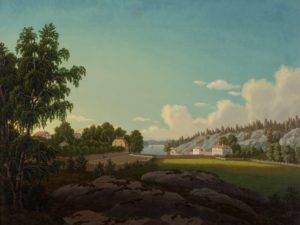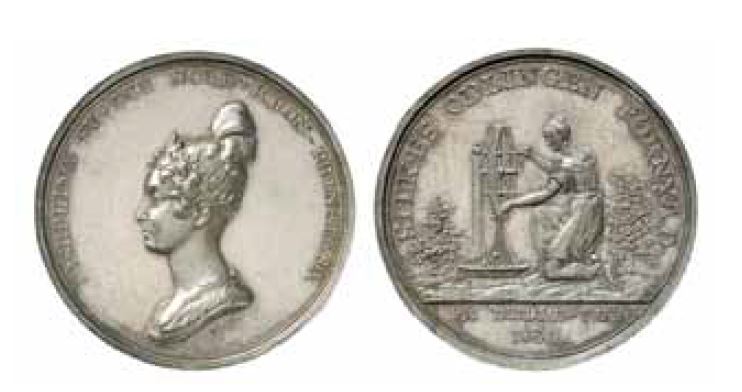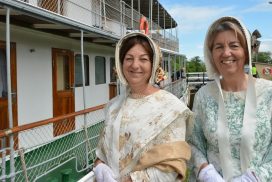The Silkworms at Bellevue
May God Preserve our Silk Worms
Father told us last Monday when he was here, that the kind pastor, Mr. Lindström, who my sister and I have recently been acquainted with, had visited father at the palace that same day in order to ask if he could give us some silkworms that he couldn’t keep as he will spend the summer in Uppsala. Father had been kind to answer and thank him on our behalf, whereupon Mr. Lindstrom had promised to send them to us in a few days. Imagine our joy in owning these insects and being able to study their interesting transformations. May God preserve them for us because cultivating them requires special care of which none of us have any knowledge. (Lotten Ulrich’s diary, Stockholm, 31 May 1833, my translation)
Imagine my surprise when I approached the carton with the silkworms and only saw the two small, and instead of the two large worms, two cocoons of yellow silk. I immediately understood that they had started to spin. (Lotten Ulrich’s diary, Stockholm, 9 July 1833, my translation)
Lotten Ulrich (1806-1887) and her sister Edla Ulrich (1816-1897) lived at the Royal Palace in Stockholm where their father, Johan Christian Henrik Ulrich, was the secretary to King Carl XIV Johan. The family later moved to Norrköping. You can read more about them and their connection with Augusta in a previous blog entry.
So, was the silkworm an upper-class, exotic pet in the 1830s? And were there any mulberry trees in Stockholm so Lotten and Edla had something to feed them?
The Swedish Association for Domestic Sericulture
The Swedish Association for Domestic Sericulture, that is, silk farming, was founded in 1830. The driving force behind the association was a young woman by the name of Charlotte Östberg. She had previously, and anonymously, published a book about silk farming and she also practiced it in Stockholm. The founding members of the association were the husband of Charlotte Östberg and among others, professors Jacob Berzelius and Nils Wilhelm Almroth (the father of Augusta’s friends Ebba and Emma Almroth). By 1841, Professor Carl Henrik Boheman, the father of Augusta’s best friends Hildur and Hildegard Boheman) had also joined the board.
The Silk production at Bellevue
The association was to encourage silk production in Sweden by the planting of mulberry trees, to publish information on silkworm care and, depending on its means, provided those interested in silk production with plants and/or mulberry seeds. By 1841, the association had distributed over 50,000 seedlings.
The patron of the association was the Swedish Crown Princess Josephine. She was very much interested in silk production and her husband, Crown Prince Oscar, provided the association with land for planting mulberry trees at Bellevue, a royal park outside Stockholm. Bellevue thus became the center for teaching and promoting silk production in Stockholm.
By 1841, the association realized that only the wealthy had taken up silk production and then, only as an interesting hobby. Still, they concluded, that for the working class to take up silk production, the gentlemen must first cultivate mulberry trees and produce silk before the working class could profit from this new industry.
A thesis on the Swedish sericulture makes for very interesting reading. In summary, Sweden gave up on producing its own silk.
If it hadn’t been for a 190-year-old diary by a girl who described the delight in getting some silkworms, I would never have known about the forest of white mulberry trees at Bellevue in Stockholm. And if I was in Stockholm, I would make an outing to the park and look for any little mulberry tree. Maybe some stump or roots survived and sprouted new trees. From my experience, mulberry trees are almost impossible to get rid of – they really grow like weeds.
Sources:
Drömmen om svenskt silke. Anders Johansson Åbonde.
Systrarna Ulrichs dagböcker. Margareta Östman.



